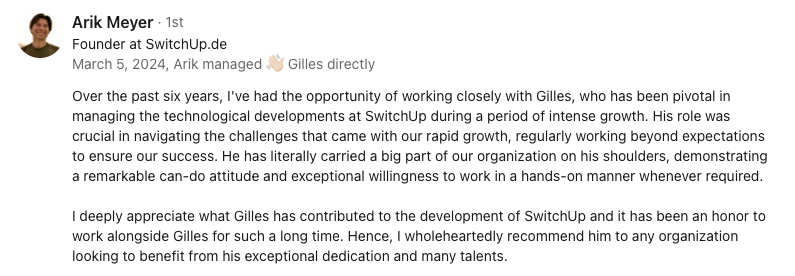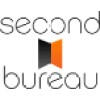R and Shiny: Revolutionizing Data Science
Abstract:
The R programming language is a crucial tool for data science due to its statistical computing, data visualization capabilities, and rich ecosystem of packages. RStudio, an IDE for R, simplifies coding and project management. Shiny, a web application framework for R, allows data professionals to create interactive web applications without extensive web development knowledge. This empowers technology leaders to streamline decision-making, encourage collaboration, and optimize resource allocation. Shiny has been successfully used in pharmaceutical companies for drug discovery and financial institutions for real-time risk analysis. In conclusion, R and Shiny together facilitate data analysis and visualization, bridging the gap between data science and web development and driving data-driven decision-making.
introduction to R in data science
When we talk about data science, one tool stands out prominently - the R programming language. Think of R as the Swiss army knife for data scientists. With its vast array of capabilities in statistical computing, data visualization, and a treasure trove of packages, R makes tackling complex data projects not only possible but enjoyable.
So, what exactly makes R indispensable? Let's explore its key features:
- Statistical Computing: R is designed by statisticians, for statisticians, which means it excels in performing a wide range of statistical analyses. From basic summary stats to intricate modeling, it has it all.
- Data Visualization: R's plotting libraries, like ggplot2, enable even the least artistically inclined among us to create stunning, comprehensive visualizations. Ever tried turning a mountain of data into a beautiful landscape of graphs? R makes it a breeze.
- Rich Ecosystem of Packages: The CRAN repository hosts over 15,000 packages, each tailored to extend R's functionality. Need to implement a machine learning algorithm? There's a package for that. Want to visualize geographic data? There’s a package for that too. You get the picture.
The flexibility and extensibility of R allow it to adapt to practically any data science task. But what's really amazing is the community behind it. A dedicated and ever-growing group of statisticians, data scientists, and developers continually contribute, ensuring R evolves and remains relevant.
If you're a data scientist who hasn’t dipped your toes into the R pool, well, my friend, you're missing out. R not only empowers you to effectively manage and analyze data but also makes the whole process just a little more fun—yes, I said fun. Now, let's journey on to explore the tools that complement R and amplify its power exponentially.
importance of RStudio
When I think about working with R, one invaluable tool that immediately comes to mind is RStudio. This Integrated Development Environment (IDE) for R essentially transforms how data scientists interact with their code and projects. It's like having a reliable sidekick who knows exactly what you need, exactly when you need it.
So, why is RStudio so important? Let's take a closer look:
- Comprehensive Interface: RStudio offers a user-friendly interface that integrates your script editor, console, workspace, and graphics viewing all in one place. No more jumping between different windows; everything you need is right there on your screen.
- Project Management: The IDE's project management feature allows you to organize your files, data, and scripts efficiently. It’s like having a well-organized toolbox, ready to tackle any data project without the chaos of scattered tools.
- Debugging and Profiling Tools: RStudio comes equipped with built-in debugging and profiling tools. Ever had a code error that left you scratching your head? These tools simplify tracking down issues, making the process less like playing detective and more like a guided tour.
- Interactive Visualizations: Beyond static charts, RStudio integrates with Shiny to create interactive visualizations. Imagine transforming static data plots into dynamic, interactive experiences—RStudio makes this seamlessly possible.
- Version Control: Integrations with Git and SVN mean you can manage code versions effortlessly. Rolling back changes and collaborating with team members become straightforward tasks rather than daunting chores.
The productivity boost RStudio provides cannot be overstated. It marries the power of R with an intuitive, streamlined user experience. Whether you're a seasoned data scientist or just starting, RStudio makes the complex art of data analysis more approachable—and yes, a little bit fun too. If R is the Swiss army knife, then RStudio is the well-organized toolkit that ensures you always have the right tool ready to go.
overview of Shiny framework
First off, let me just say how amazing it is to see someone who's clearly interested in making data come alive! Nine times out of ten, when I hear data professionals talking about interactivity in their work, Shiny inevitably gets mentioned. Shiny is the web application framework for R that lets you create interactive web applications without needing to be a web development whiz—think of it as the magic wand for your data.
With Shiny, you can build apps that are both visually appealing and highly functional, and you don’t have to worry about mastering HTML, CSS, or JavaScript. Instead, Shiny leverages R’s capabilities, allowing you to focus on what you do best—analyzing and visualizing data. It's like having a secret superpower where you snap your fingers, and ta-da! Your static graphs turn into dynamic web apps.
Let's break down why Shiny is such a game-changer:
- Easy-to-Use: You don’t need to juggle multiple programming languages to create an interactive web app. A few lines of R code can generate dashboards that wow stakeholders.
- Real-time Interactivity: Shiny apps allow users to interact with data in real-time by adjusting parameters, filtering datasets, and dynamically updating visualizations. It’s the difference between presenting a snapshot and showing a live, breathing organism.
- Customizable: While Shiny has sensible defaults, it also offers flexibility. If you have a design vision, Shiny can make it happen. From sleek UIs to intricate plot customizations, your creativity is the only limit.
- No Web Development Required: Forget about the headaches related to frontend/backend coordination. Shiny handles both, so you can stay in the R ecosystem you're comfortable with.
- Seamless Integration: Shiny works seamlessly with other R packages. Whether it's ggplot2 for your charts or dplyr for data manipulation, Shiny enhances these functionalities, giving you a robust toolset for your web applications.
So, to sum it up, Shiny somehow manages to turn every R user into a competent web developer. Imagine defining user interfaces, orchestrating server logic, and turning complex data into interactive experiences—all from within R. It's not just a tool; it's like having a Swiss army knife where each part is specifically designed for data, making the job easier and more enjoyable. And let’s be honest: any tool that can make data science both powerful and fun is something worth celebrating.
empowerment and decision-making with Shiny
I have to say, few things in the world of data science give me as much excitement as Shiny. It’s like being handed the golden key to streamlined decision-making and boosted collaboration. Shiny’s real-time interactivity lets technology leaders like us harness the power of data instantly, creating a dynamic environment for informed choices.
Now, why does this matter for leaders trying to make crucial decisions? Here are a few reasons:
- Streamlined Decision-Making: Shiny enables the creation of interactive dashboards that provide up-to-the-minute insights. When you’ve got data at your fingertips—updated live—you can make decisions faster and with greater confidence. It’s a bit like having a crystal ball, but with solid data backing it up.
- Encouraging Collaboration: One of Shiny's underrated features is its ability to foster teamwork. Teams can have access to the same set of interactive applications, ensuring everyone is on the same page. Whether it's a finance team running scenarios or an R&D team visualizing test results, Shiny brings people together—figuratively and literally—around the data that matters.
- Optimized Resource Allocation: With Shiny, leaders can visualize resource allocation in meaningful ways. By adjusting parameters on interactive models, you can see immediate impacts on budget, time, and manpower. It’s a bit like playing a real-life strategy game, but the high score here is efficient management and optimal outcomes.
But let's be honest, it’s not just about making faster decisions; it’s about making better ones. Consider Shiny apps that display predictive analytics models: they allow leaders to tweak variables and see possible futures. This foresight is invaluable for strategic planning and risk management, giving you the edge you need in high-stakes environments.
In a nutshell, Shiny transforms how we make decisions, align teams, and allocate resources. It's like having a Swiss army knife for data, but also a master orchestrator for your entire team. And if that doesn’t make your tech-savvy heart race just a little, I don’t know what will.
R and Shiny in pharmaceutical industry
Let’s talk about one of my favorite uses for R and Shiny: the pharmaceutical industry. These tools have emerged as game-changers, particularly in drug discovery. If you're curious about where they fit in, imagine a complex puzzle gradually revealing itself with each piece, much like a successful drug discovery process.
In drug discovery, time is of the essence, and so is accuracy. Here’s where R and Shiny excel:
- Data Integration: The pharmaceutical world runs on data—tons of it. Shiny apps can seamlessly integrate various data sources, from clinical trials to genomic databases, allowing researchers to view comprehensive datasets in real-time.
- Interactive Visualizations: Identifying potential drug candidates requires sifting through labyrinths of data. Shiny’s interactive visualizations make this process less daunting, enabling scientists to explore trends, spot anomalies, and make informed decisions more efficiently.
- Predictive Modeling: R’s prowess in statistical computing pairs perfectly with Shiny’s interactivity to create robust predictive models. These models can simulate drug interactions or predict side effects, helping researchers refine their hypotheses more quickly.
For instance, there’s a case study where a pharmaceutical company used Shiny to develop an app for monitoring adverse drug reactions in real-time. This application allowed stakeholders to adjust parameters dynamically, filtering through massive datasets to pinpoint potential issues that might have remained hidden.
In another scenario, Shiny was employed to create an interactive dashboard for visualizing genomic data. It enabled researchers to adjust filters and visual parameters, dramatically speeding up the identification of promising drug targets.
In both cases, the power of R and Shiny lies in their ability to turn vast, complex datasets into manageable, insightful visualizations. This isn't just about making data accessible; it’s about empowering scientists to make faster, more informed decisions. Plus, let’s face it, anything that makes rigorous scientific research feel a little more like an adventure is a win in my book.
R and Shiny in financial institutions
As someone entrusted with guiding the technological direction of our organization, I can't stress enough how transformative R and Shiny have been for financial institutions. These tools are like an all-in-one toolkit for managing and visualizing financial data effectively, especially when it comes to real-time risk analysis. It's almost like having superpowers but in the domain of finance.
Let's get into why this dynamic duo is so impactful:
- Real-Time Risk Analysis: Financial institutions deal with risk analysis continuously. Shiny helps transform static risk models into dynamic, interactive dashboards that update in real-time. Imagine being able to visualize market fluctuations or credit risks as they happen, rather than after the fact. It’s akin to having a financial crystal ball that actually works.
- Interactive Dashboards: Identifying and mitigating risks becomes a lot simpler when you’ve got interactive dashboards at your disposal. Shiny lets you filter and manipulate data on the fly, providing the necessary agility to respond to market changes swiftly. It’s like turning a static photo into a live video feed.
- Advanced Data Visualization: Complex financial data can be tough to interpret. With R and Shiny, advanced data visualization tools come into play, helping analysts and stakeholders glean insights quickly. You can swap out sifting through endless spreadsheet columns for engaging visual narratives that tell the story at a glance.
To illustrate, imagine a scenario where a financial institution uses a Shiny app to monitor liquidity risk in real-time. The app could pull in data from various sources, allowing users to adjust parameters like interest rates and asset prices. Instantaneously, the dashboard reflects the new risk levels, enabling stakeholders to take preemptive actions. Another remarkable example is during stress testing: Shiny apps can simulate various economic scenarios, giving a detailed view of potential impacts and necessary buffer adjustments.
In essence, R and Shiny turn formidable financial challenges into manageable, even enjoyable, tasks. They empower financial analysts to be more proactive rather than reactive. And let’s face it, anything that makes the numbers game in finance both powerful and a teensy bit fun is a win on all fronts.
summary and impact of R and Shiny
If there's one thing I've learned from exploring R and Shiny, it’s that these tools are game-changers—transforming not just how we handle data, but how we view it. R offers unmatched prowess in statistical computing and data visualization, boasting a rich ecosystem that makes it the Swiss army knife of data science. RStudio further enhances this with its streamlined project management, interactive visualizations, and debugging tools, making the data journey smoother.
Shiny, on the other hand, brings R’s capacities to the web, enabling us to create interactive applications without the traditional web development headaches. From real-time interactivity to seamless integration with R packages, Shiny turns data presentations into dynamic, engaging experiences. These tools collectively empower industries—from drug discovery in pharmaceuticals to risk analysis in financial institutions—by bridging the gap between data science and web development.
In essence, R and Shiny don’t just make data science more accessible—they make it more fun and impactful, putting powerful tools right at our fingertips.
memorable takeaway on R and Shiny
If there's one standout idea I’d like to leave with you, it’s that R and Shiny have fundamentally transformed how we approach data science. These tools don’t just streamline processes—they revolutionize them. From R's exceptional capabilities in statistical analysis and visualization to Shiny’s breathtaking ability to turn static data into dynamic web applications, the possibilities are boundless.
Looking ahead, I see an even greater integration of these tools into diverse fields, automating complex tasks and refining decision-making processes. Imagine a future where data exploration is as simple as a few clicks, where the most intricate datasets are made comprehensible through interactive dashboards. This isn’t science fiction; it’s where we’re heading, and R and Shiny are the trailblazers leading us there.
For those of us in leadership positions, such as Chief Technology Officers or data science leads, these tools are indispensable. They provide the flexibility to adapt to rapidly changing data environments and the power to make informed, data-driven decisions quickly. And let's not overlook the joy they bring to the process. Yes, data science can be fun, and these tools make that possible.
So, whether you’re entrenched in pharmaceutical research or navigating the finance world's intricacies, consider how R and Shiny can empower your work. They are not just tools in a toolbox; they’re the secret sauce that can elevate your projects from good to extraordinary. Embrace them, dive into them, and let them transform your data science journey into something exceptional.














